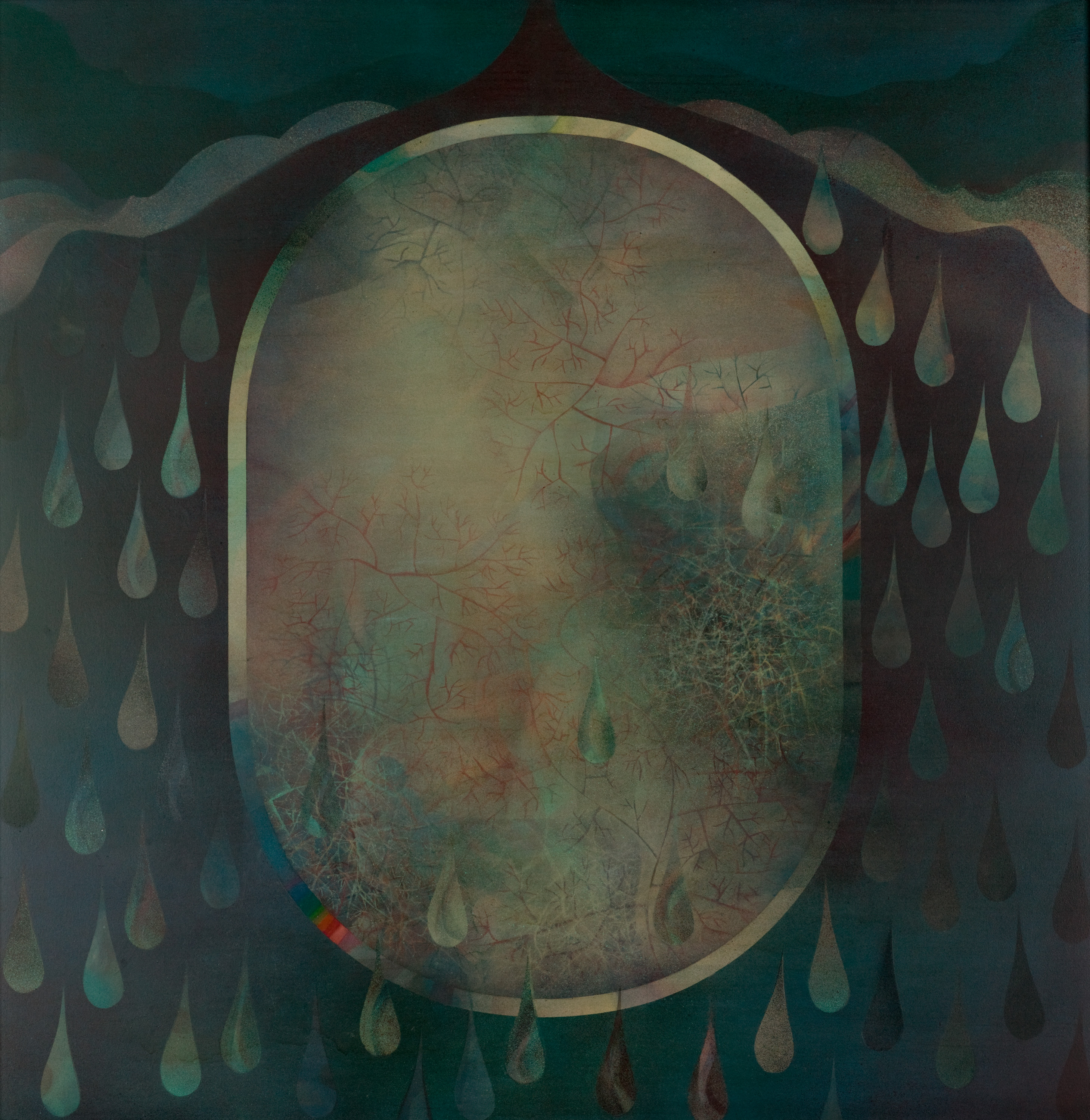Gilgamesh Weeps

Object Name:
Title: Gilgamesh Weeps
Date: 1970
Description: Gilgamesh Weeps is one in a group of paintings and prints made in 1970 which engaged specific geometric formats to work on e.g. the square, circle, and vertical rectangle. Several paintings, including Gilgamesh Weeps, used industrial polyurethane spray cans and stencils on board. And many employed the spectrum. The formal means –– formats, materials and mediums –– were all part of the work's semiotic construction of meaning.
At the centre of this painting is a large oval mirror with refracted light and spectrum on its bevelled edges. It sits in a plane of translucent liquid drops below a draped curtain.
The series used industrial materials and processes, for their expression of the zeitgeist in 1970 and investigated formal means (the grid, symmetry, spectrum, square, circle, triangle) to structure a visual language of signs.
The artist's interest in social history, a different model to the then dominant NZ art model of a nationalistic image of the land, had positioned her research in pre history, in our origins, linking the field of gender studies in ancient Western civilisations history, myth and metaphysics with attention to contemporary dominant political structures and gender politics in 1970 New Zealand. Her interest in the love poems of Inanna lead her to Enkido, Enki and "The epic of Gilgamesh", which is considered the first great Western literature.
Size: 1219 x 1219 mm
Where Made: Te Moana studio, Geraldine, South Canterbury, New Zealand
Where Used: 1970-01-01, 1971-01-01, 1972-01-01, Christchurch, Dunedin
Condition: Good
Current Location: Wellington: artist's home